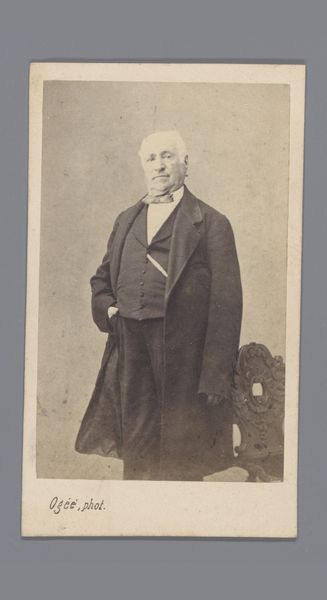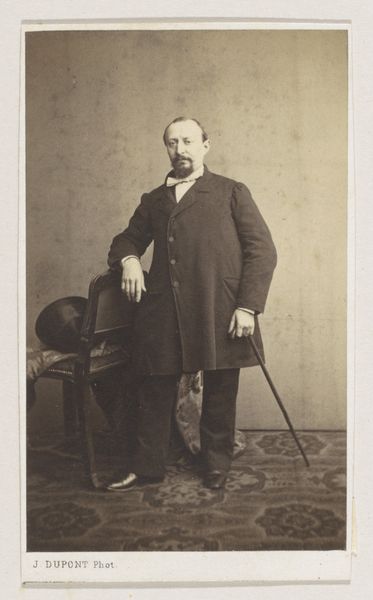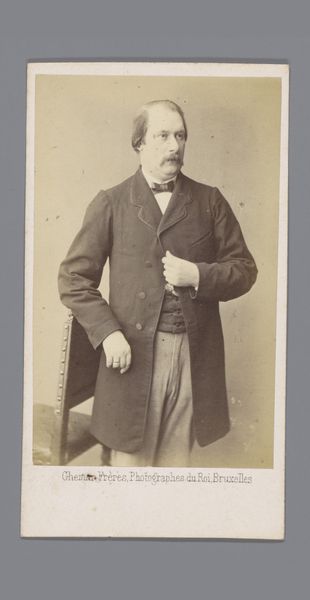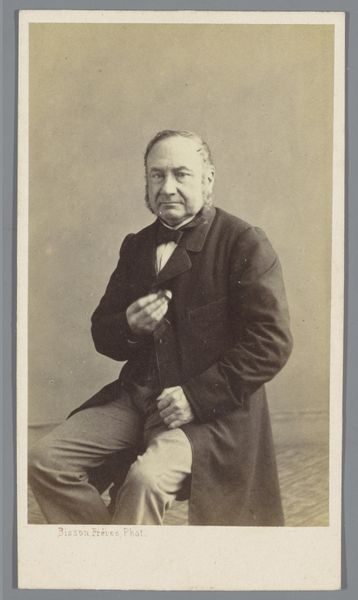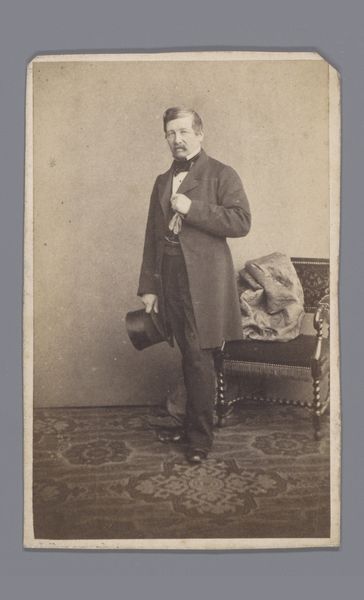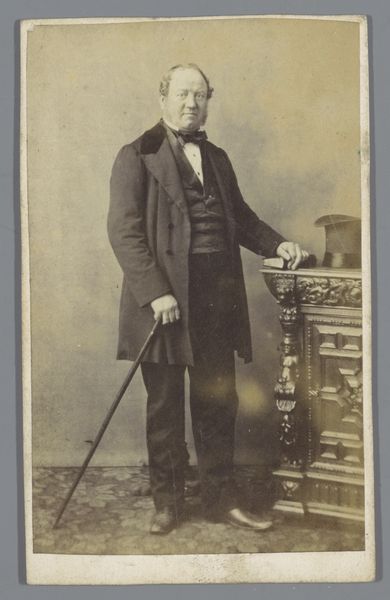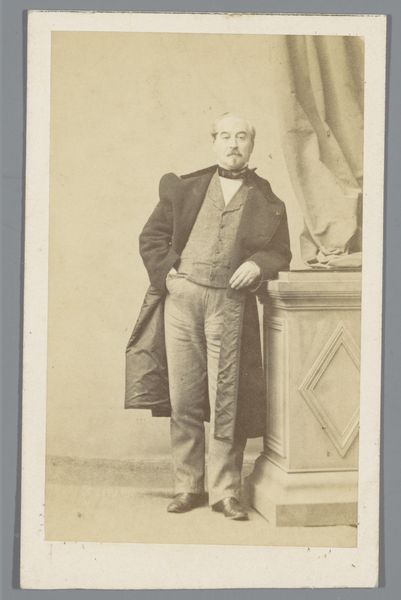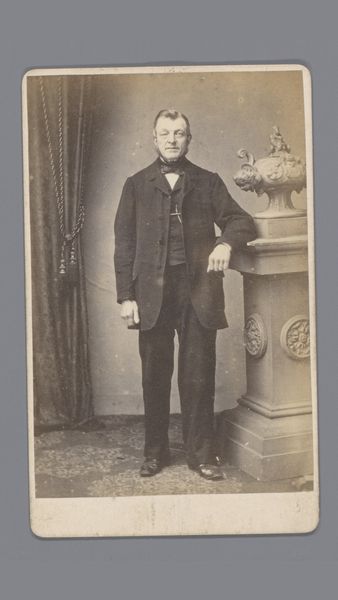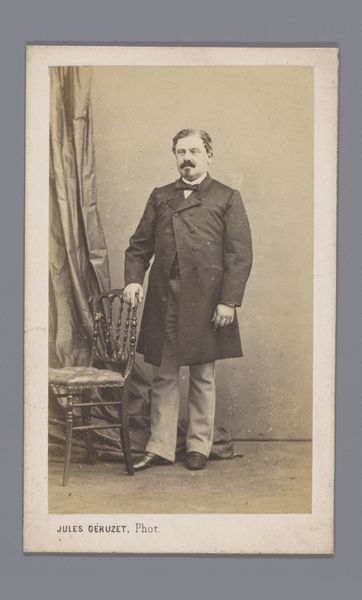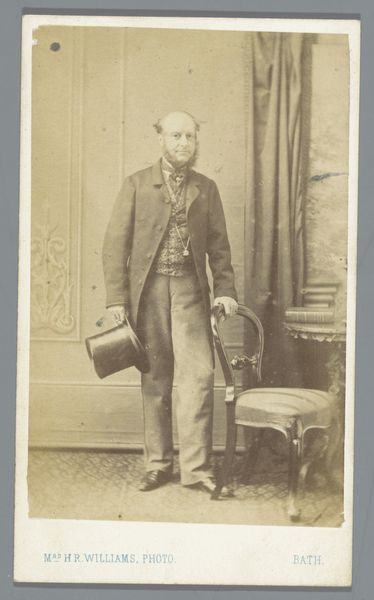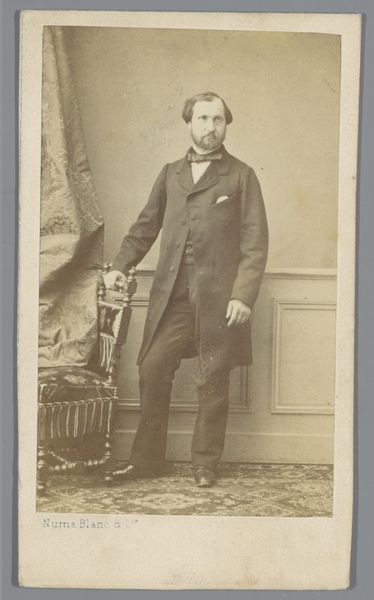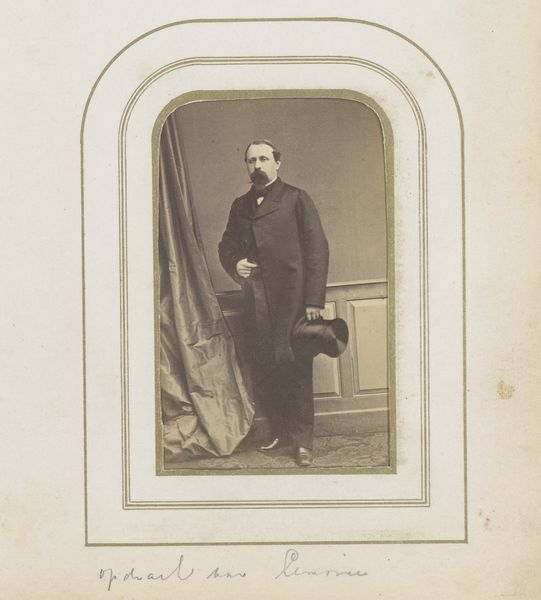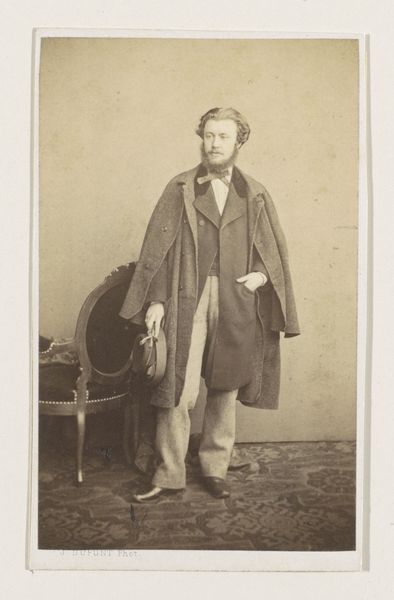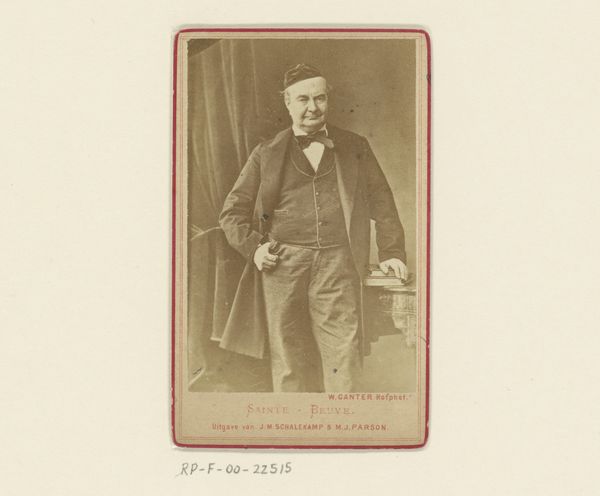
daguerreotype, photography
#
portrait
#
vintage
#
light coloured
#
daguerreotype
#
photography
#
realism
Dimensions: height 104 mm, width 59 mm
Copyright: Rijks Museum: Open Domain
Editor: Here we have a photograph entitled “Portret van een onbekende man naast een stoel,” dating from sometime between 1854 and 1885, created by Bisson Frères. It's a daguerreotype, so the tones are subtle. I find it quite captivating, the way the light falls. What's your take on it? Curator: Well, daguerreotypes like this one served a critical social function in the mid-19th century. Photography democratized portraiture. Consider the social impact – before this, painted portraits were largely the domain of the wealthy. Editor: So, having your photo taken suddenly became more accessible? Curator: Precisely. Now, middle-class individuals could have their likeness captured and preserved. These weren't just pictures; they were declarations of identity and status in a rapidly changing world. He appears quite stern. Do you see a social statement in that posture, or the style of dress? Editor: Maybe. He certainly wants to project an image of respectability and perhaps a bit of authority. It's a formal pose, but his hand casually tucked in his coat makes him look relaxed, even modern. Curator: That subtle combination is precisely what makes these early portraits so interesting! It tells us so much about how people wanted to be seen at the time, especially as photography began shaping perceptions of reality and social norms. He wants to project authority without being a monarch, which has resonance for the time. Editor: That's fascinating – it shifts how I see it. The photograph becomes more than just an image, and represents larger cultural shifts!
Comments
No comments
Be the first to comment and join the conversation on the ultimate creative platform.
